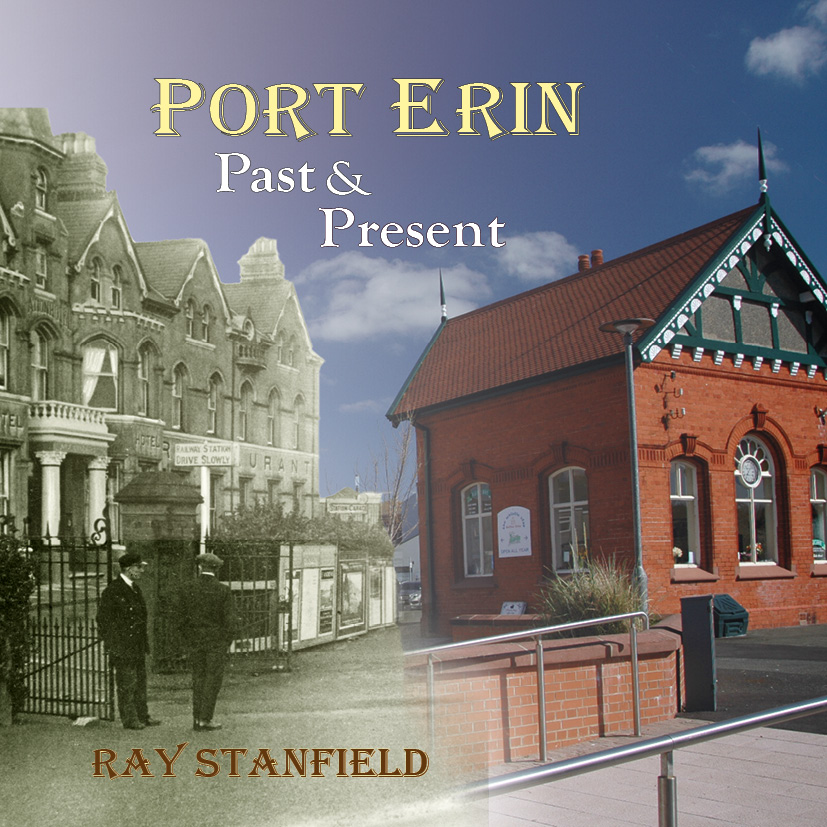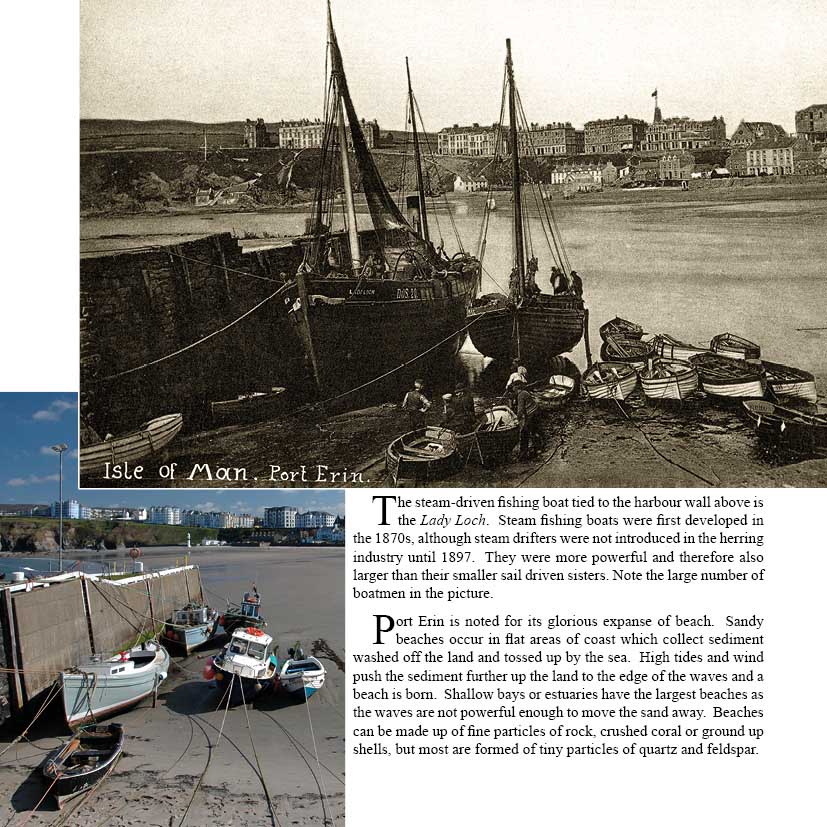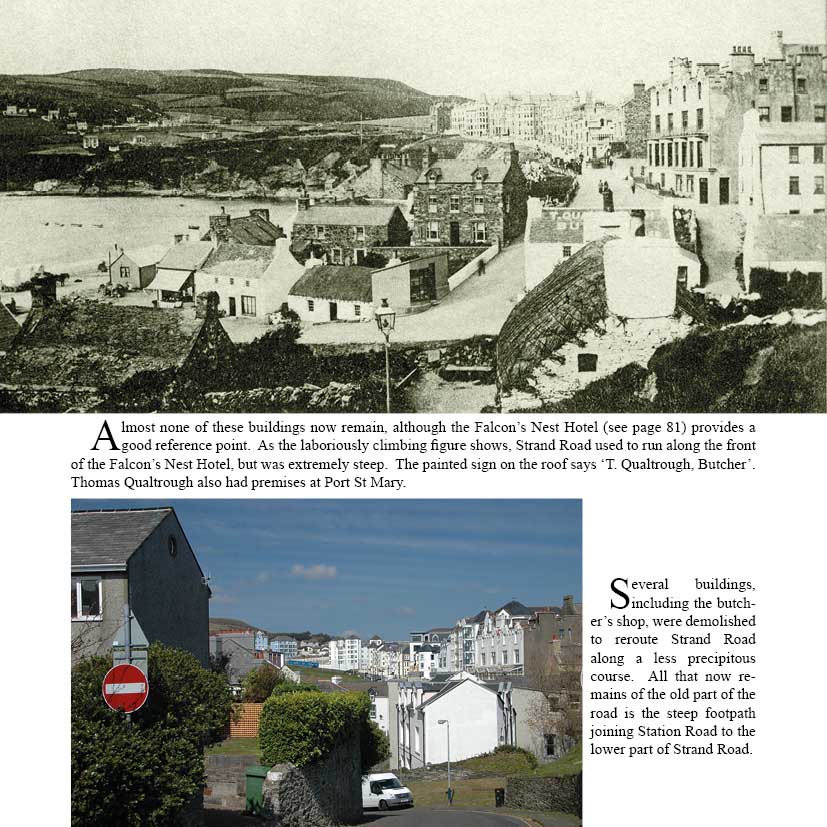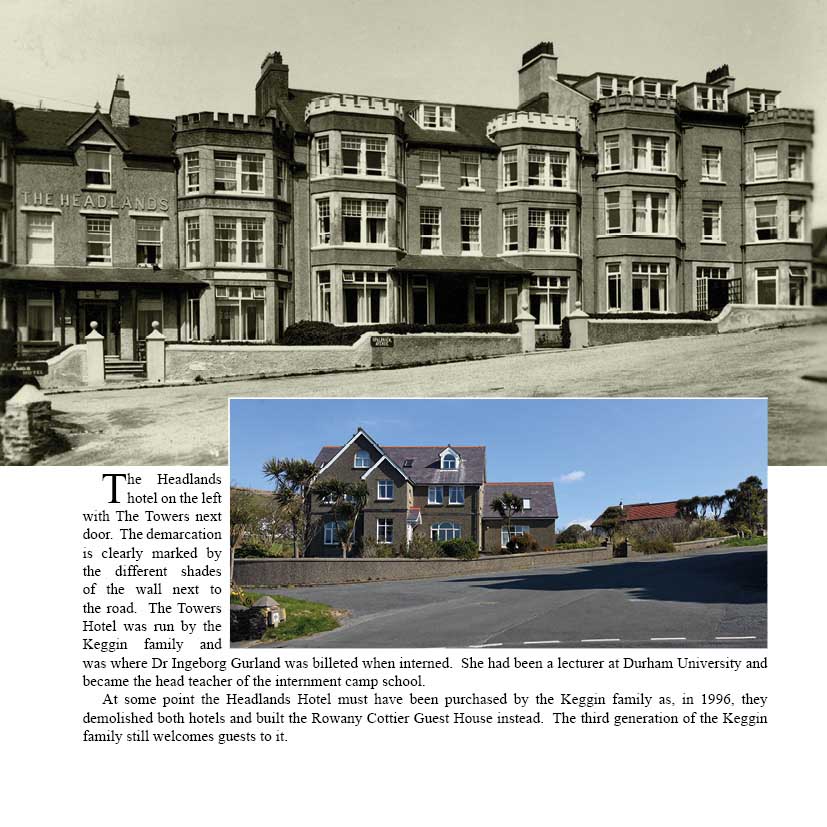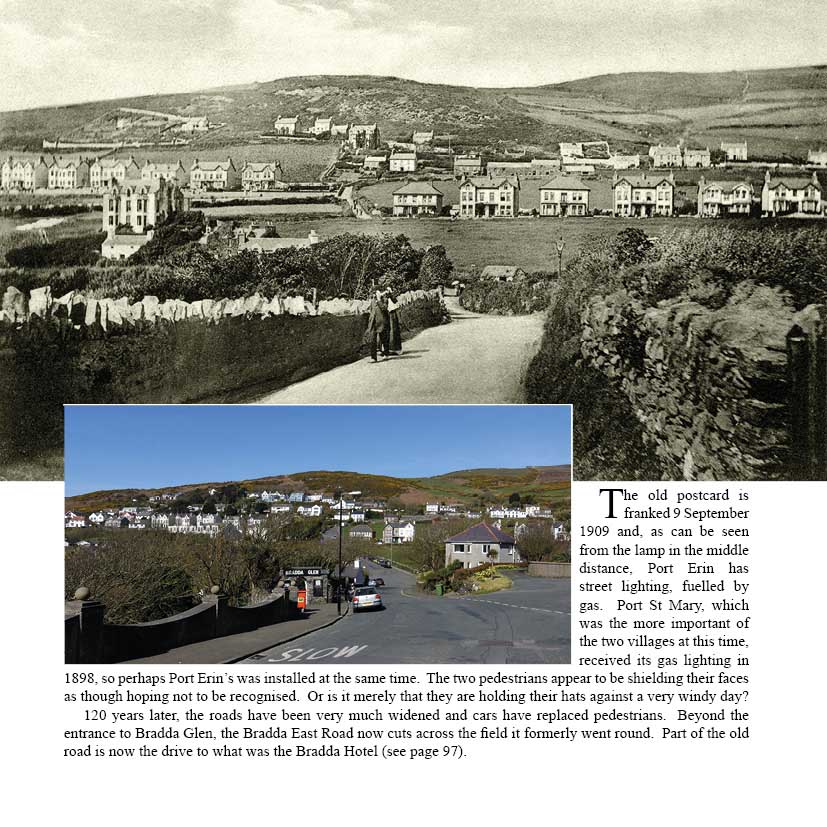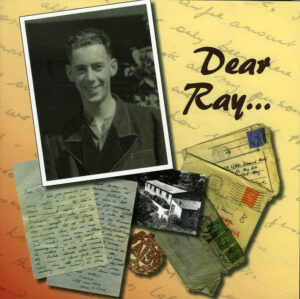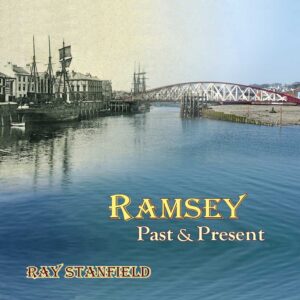Port Erin: past & present
£13.95
By Ray Stanfield, George Hobbs & Sara Goodwins
Old photographs supplied by Ray Stanfield with matching modern photographs by George Hobbs. Captions by Sara Goodwins.
“Coode was probably the most respected harbour engineer of the nineteenth century. He advised on harbours in South Africa, New Zealand, Australia and India, but didn’t do too good a job for Port Erin… Coode and his team were sure that the blocks were so big and heavy that their own weight and mass would prevent movement. They were wrong.”
Port Erin; past & present, page 17
At the turn of the nineteenth century holidaymakers discovered the Isle of Man. From June to September different manufacturing towns in the North of England celebrated Wakes Week.
The mills and factories in a town would close, and their workers would have a week of unpaid holiday. Many of them came to the Isle of Man. Across the sea and therefore temptingly exotic it was also near enough and affordable enough to get to.
Port Erin became a favourite place to visit. Hotels were built and life started to revolve around the needs of the visitors. Hotels offered dances and live entertainment, sea bathing was considered healthy and bathing machines were available on the beach. Having fun was the order of the day. Most of the Victorian seaside trappings are gone now and the seaside town is reinventing itself yet again. This book reminds us of the dramatic changes which have taken place often in a surprisingly short period of time.
From the Publisher
Most of the old photographs and images used in this book are drawn from Ray Stanfield's extensive collection of postcards. The first picture postcards were published in Britain in 1894 and millions were sent over the next twenty years. Local photographers would often produce them in quite short runs to tempt customers to send or collect them as holiday souvenirs.
But postcards were also the text messages of their day. Before everyone had a phone, the only way to contact friends and relatives was to write to them. Post was delivered several times a day, so it was perfectly possible for a postcard to arrive the same day it was sent - within the island at least. Post your card early enough and you could even get a reply the same day as deliveries went on into the evening. And postcards were cheaper to send than letters.
People therefore sent postcards for all sorts of reasons. Their main importance in this book is the image on the front, of course. Even so, as with its sister volumes about Ramsey, Castletown and Peel, when we were putting the book together we were often fascinated by the glimpse the messages gave us of the lives of those who had written them so long ago.
Copyright 2021 Loaghtan Books. All rights reserved.
